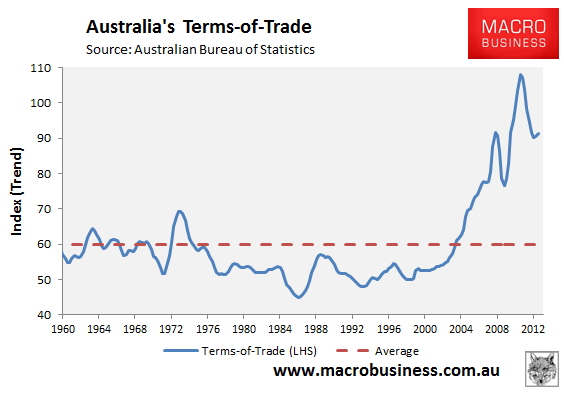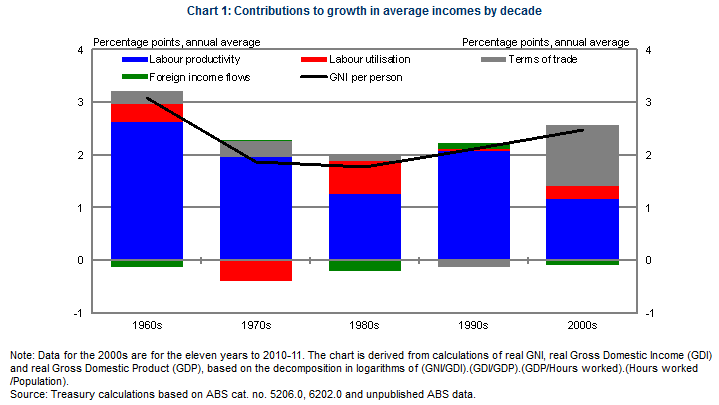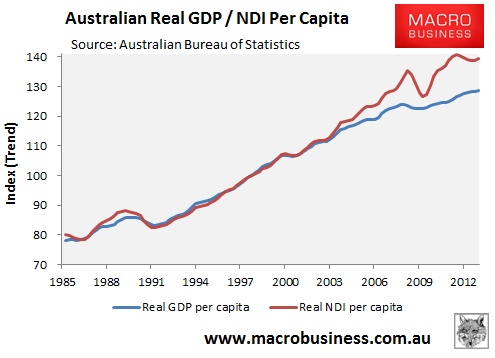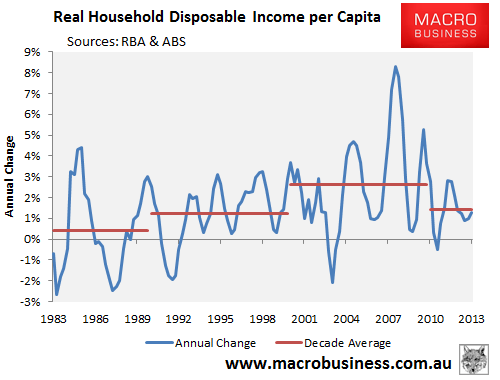
The Productivity Commission (PC) has released a new report analysing the sources of growth in income in Australia and the effects of structural change (read the mining boom) on the distribution of income between labour and capital.
The report reveals that labour’s share of income fell by around 4% of total income over the 2000s due to the mining investment boom, which added to the nation’s capital stock, leading to more capital intensive production overall.
However, while labour’s share of total income fell over the 2000s, it was still significantly better-off, since the huge rise in commodity prices and the terms-of-trade “meant that product prices rose faster than consumer prices. While labour received a smaller share of income at product prices, the slower growth in consumer prices meant that the real value of each dollar earned was worth more in terms of its purchasing power. This purchasing power effect (which was available to all income earners) more than outweighed the apparent reduction in labour’s share of national income.”

Moreover, this gain in real labour income was significantly stronger than the growth experienced during the “productivity decade” of the 1990s.
The PC notes that as the terms-of-trade declines, labour’s share of total income will rise, but this rise will be more than offset by losses in total income. As such, “a focus on productivity growth will be the way to sustain growth in real wages”.
Obviously, I agree with the PC’s thesis. Over the past year, I have written extensively on how the ongoing decline in commodity prices and the falling terms-of-trade would weigh heavily on Australian income growth in the years ahead and how over the next decade, incomes are unlikely to grow at anywhere near the pace experienced over the 2000s when the once-in-a-century boom in commodity prices took place, requiring significant increases in productivity.
The monumental impact of the rising terms-of-trade on average incomes was revealed last year by the Australian Treasury, which published research showing that around half the growth in average incomes over the 2000s was caused by the one-in-a-century rise in Australia’s terms-of-trade (see next chart).

Essentially, the huge rise in the terms-of-trade – driven primarily by big pay rises for the goods that Australia sells to the rest of the world (including: iron ore, coal, gold, and natural gas) – meant that Australia’s national disposable income (NDI) grew at a much faster rate than output, as measured by GDP, making Australians much wealthier, since a far larger amount of imports could be purchased from a given amount of exports (see next chart).

Part of this strong growth in NDI flowed to households, which experienced exceptionately strong income growth over the 2000s, as shown by the next chart:

As shown above, household income growth has slowed over the past three years as the terms-of-trade started to retrace from record highs. And as the terms-of-trade trends lower still, it will drag on household income growth, unwinding much of the gains enjoyed over the 2000s.
In the years ahead, Australians will, therefore, have to get used to much slower income growth than they have become accustomed to and will instead have to earn pay rises the old fashioned way: via improved productivity. This is why a new reform program is so important.

